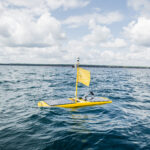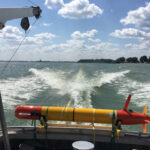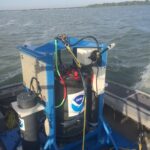The NOAA Great Lakes Environmental Research Laboratory (GLERL) and Michigan Technological University (MTU) Great Lakes Research Center recently teamed up on the deployment of a wave glider in Lake Superior. The chemical and biological data collected will help researchers understand … Continue reading

October 12, 2021
by Margaret Lansing
1 Comment





